The world record of Russian overclockers and everything you wanted to know about the acceleration of modern iron, but hesitated to ask
Hi, Giktayms! Russian overclockers from the Team Russia team broke up the GeForce 1080 Ti paired with the fastest Intel processors and set several world records. How are the summits of masters of overclocking arranged, why AMD Ryzen doesn’t shine to become an overclocking legend, and how competitive overclocking differs from the opposition of “oligarchs” with expensive iron - we find out firsthand.
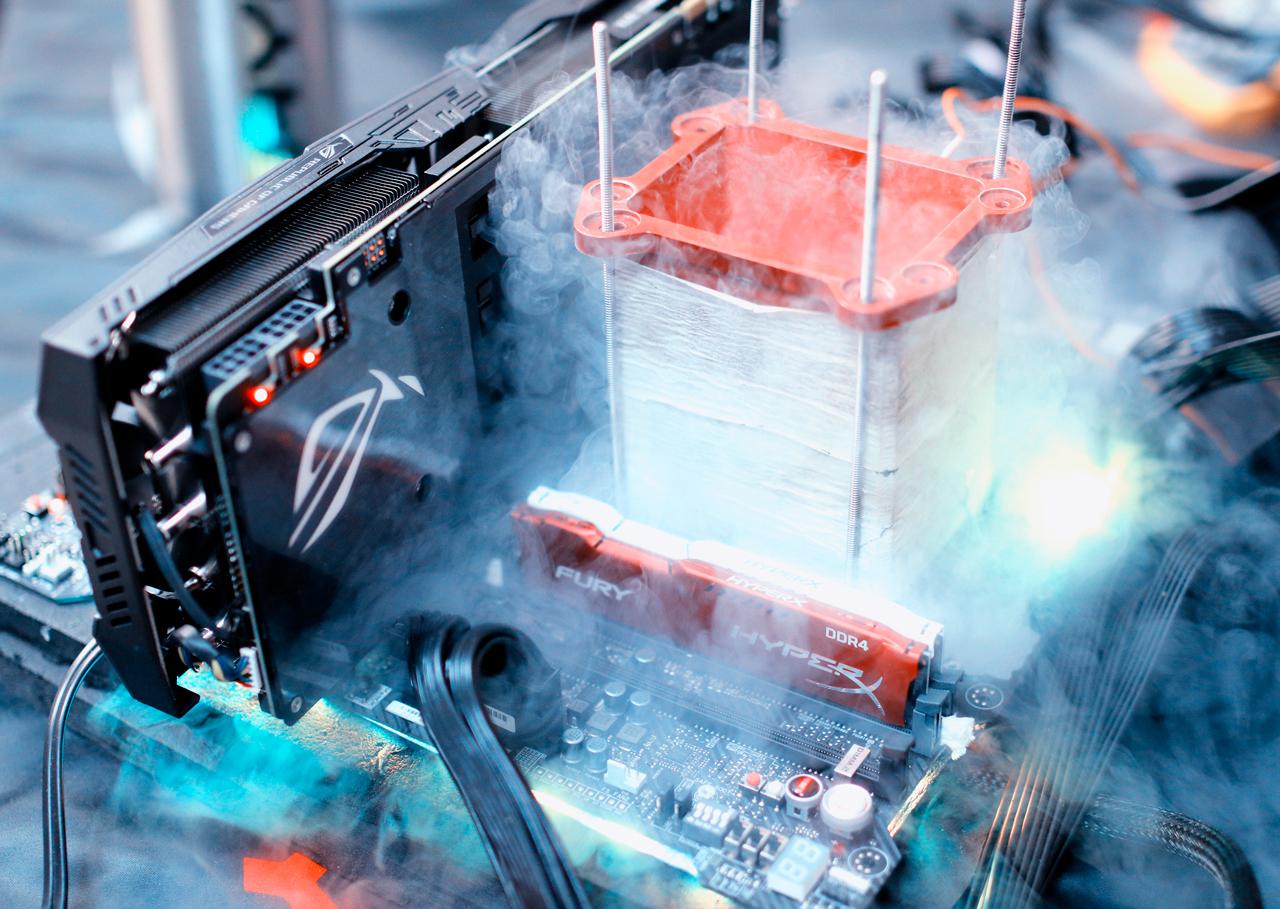
“Records on schedule” is not a very romantic practice. Overclocking masters must approach the business creatively and take heart records in benchmarks with an outburst of heart, right? But jokes and jokes, and to help talented guys with new components is necessary - for this, there is a joint overclocking summit of ASUS and HyperX , which takes place once a quarter.

This set + skill is enough for world records
')
This time, the main reason for “overclocking” was the debut of the NVIDIA GeForce 1080 Ti video card, an intermediate model between the astronomically expensive Titan Xp and the “ex-flagship”, the standard version of the GTX 1080.
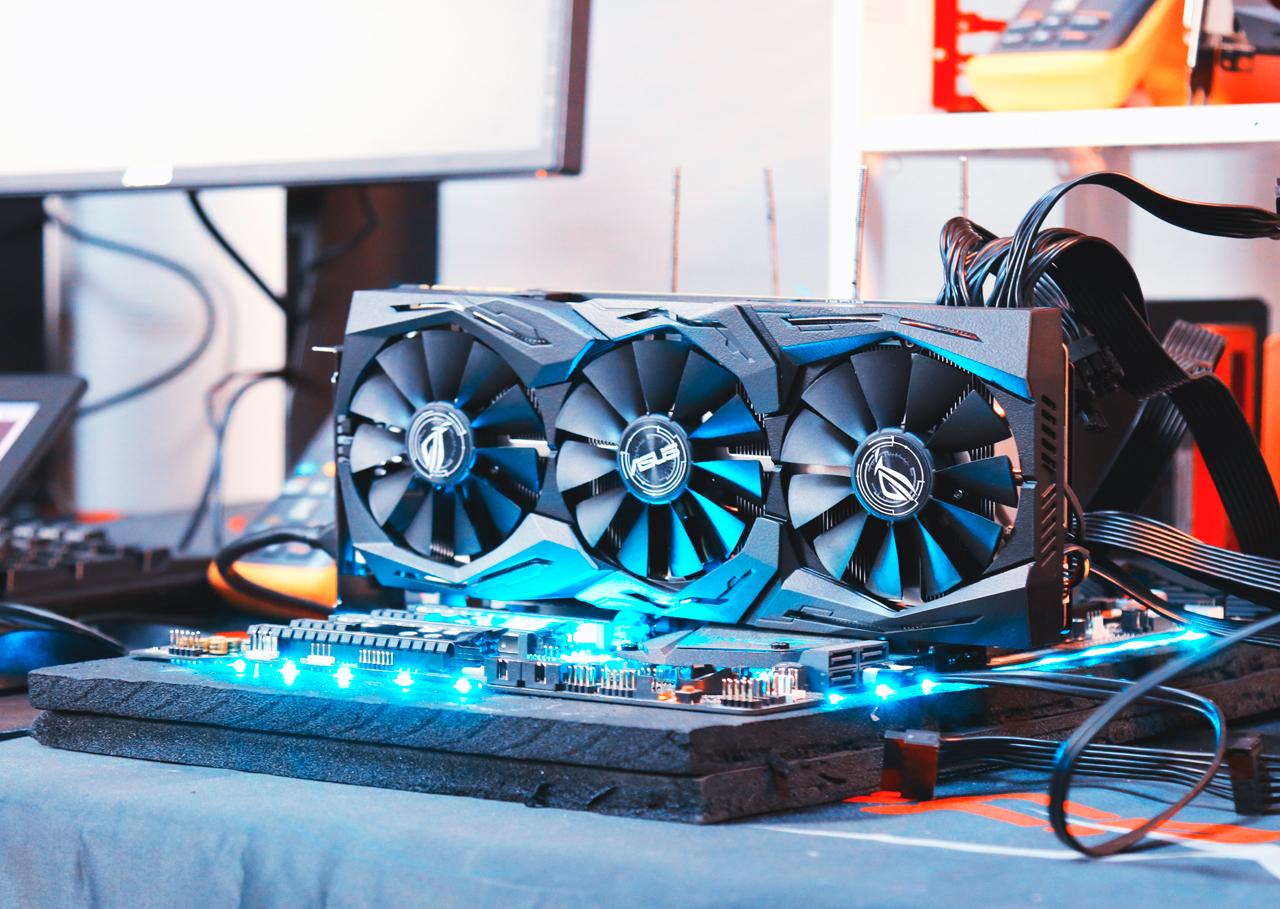
NVIDIA GeForce GTX 1080 Ti - the most productive video card at a reasonable price
The result is an absolute record in 3DMark03 (353103 points) and five more prizes in the TOP-5 in the following disciplines:
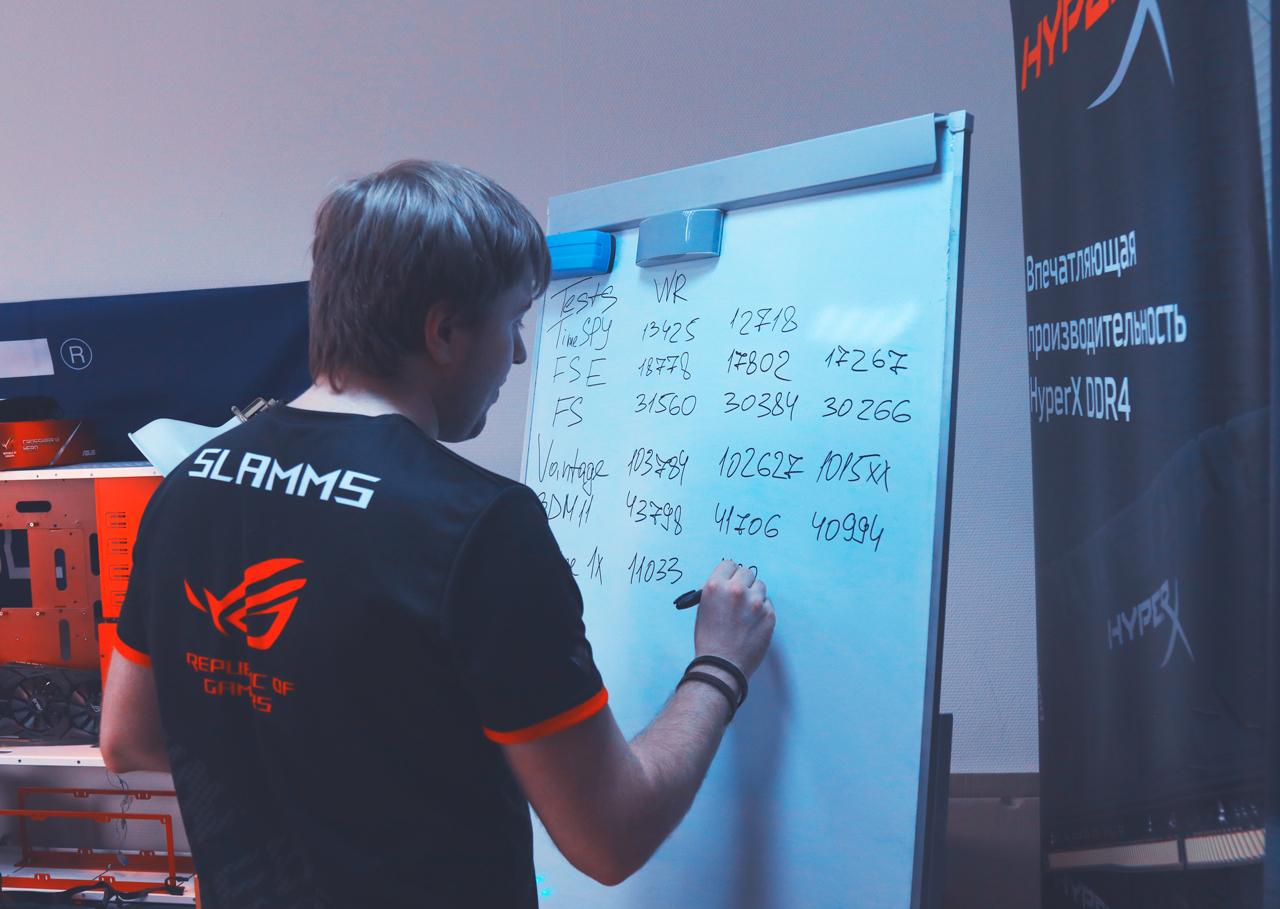
• 3DMark TimeSpy - 13044 marks - GeForceGTX 1080 Ti @ 2354 / 1560MHz - 2nd place among single video cards;
• Unigine Heaven Xtreme - 11187.37 DX11 Marks - 2x GeForce GTX 1080 Ti @ 2000 / 1377MHz - 3rd global location;
• 3DMark11 Performance - 40994 marks - GeForce GTX 1080 Ti @ 2328 / 1552MHz - 4th global location;
• 3DMark Vantage Performance - 101539 marks - GeForce GTX 1080 Ti @ 2350 / 1575MHz - 4th global place;
• 3DMark Fire Strike Extreme - 17642 marks - GeForce GTX 1080 Ti @ 2370 / 1560MHz - 4th place among single video cards.
The victorious configuration consisted of the following components:
“Yes, I will call you this configuration with my eyes closed! They piled up expensive iron - and all things! ”- it seems at first glance. But overclocking is different from the shopping of the oligarchs, it’s not enough just to take the most expensive components to find yourself among the world record holders. Now you will understand why:
Processors: Intel Core i7 7700K (Intel Kaby Lake) and Intel Core i7 6950X (Broadwell-E). As you can see, the LGA1151 is not such a “consumer goods for housewives” as it may seem in comparison with 2011-v3.
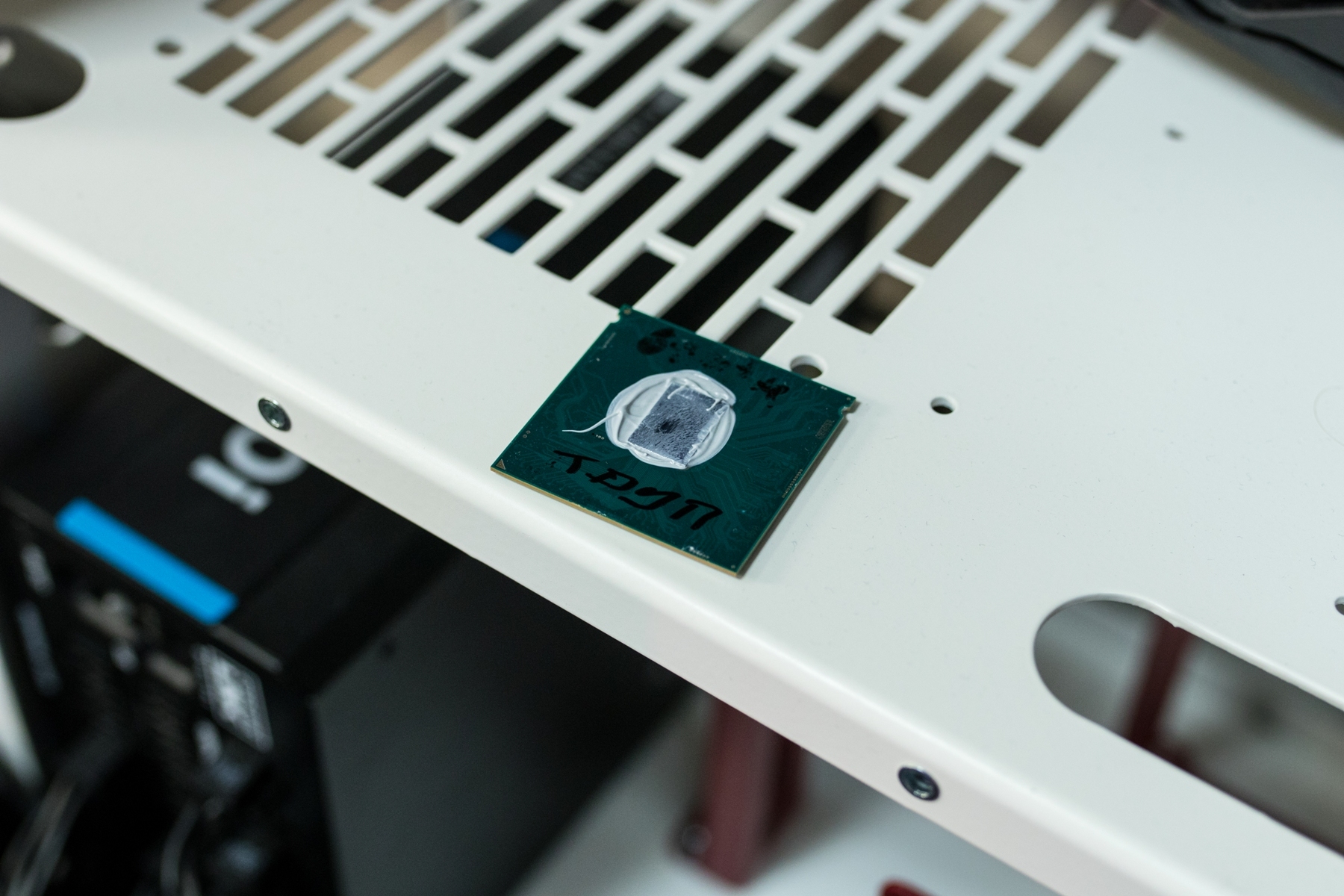
Fell the death of the brave
Moreover, although the differences between the Skylake and Kaby Lake microarchitectures are insignificant, the optimization of the processors was enough for the top part of the table with the fastest processors to be crammed with the seventh generation of Intel Core. In all cases where the so-called legacy benchmarks (3DMark from first to sixth, Aquamark) are used, the high frequency and performance per clock in the Kaby Lake Core i7 come in handy.
But Broadwell-E, whatever one may say, is necessary for modern tests with an emphasis on the graphic component. Because, if in popular games one can still complain that “igrodels do not know how to load more than four cores”, then synthetic benchmarks are designed with a much broader base on multi-threading and multi-core. So, there is a benefit from the redundant Core i7 Extreme home PC in sports overclocking.
Motherboards: ASUS ROG Maximus IX Apex on the Z270 chipset (Kaby Lake) and ASUS Rampage V Edition 10 (platform 2011-v3). We have already told about Apex - it is a “sports” matplata that is resistant to low temperatures, in which there is nothing superfluous, even the third RAM slot. The memory controller in Intel Kaby Lake processors is dual-channel, which means that maximum efficiency is achieved when the motherboard has two RAM modules. All that is above is an unjustified load on the controller under conditions when each “parrot” of the benchmark is counted.
Rampage V Edition 10 is about the same "combat minimum", but for Broadwell-E and based on the Intel X99 chipset. With convenient start control and stable operation when cooled with nitrogen. A huge number of overclocking settings that may not be useful in home use, but help to quickly find the right mode in overclocking.
Memory: HyperX Fury and Predator , DDR4, of course. Modules with a capacity of 8 GB, two for a platform based on Kaby Lake (for dual-channel controller) and four for 2011-v3. You can marvel at the fact that not an ultra-extreme Fury sets world records, but for many benchmarks it’s not enough the highest memory frequency, which only happens, but just a good overclocking, beyond which the result will remain unchanged. There are many particulars for each of the disciplines, especially in the "vintage" benchmarks.
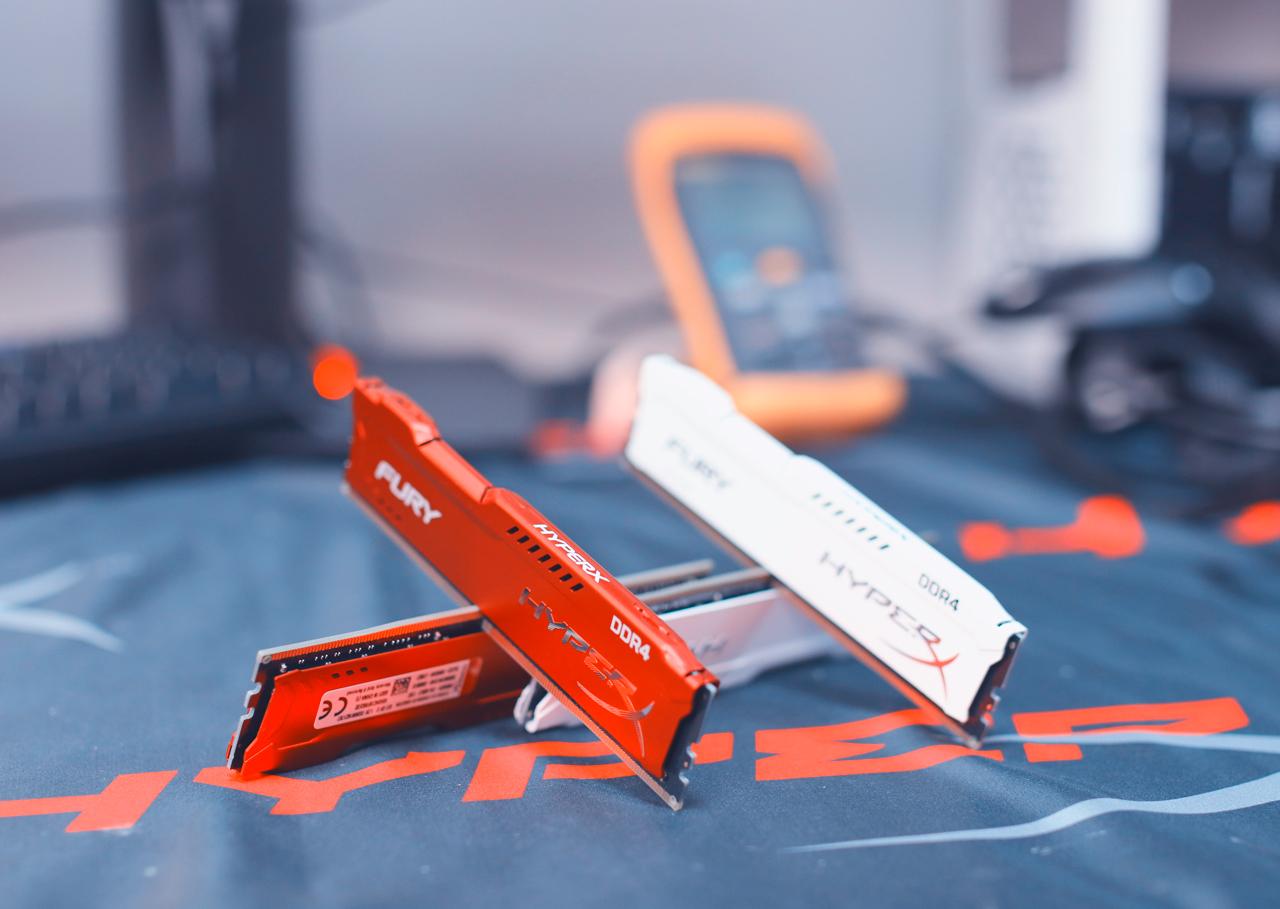
RAM, in contrast to the cooling of the processor or video card, does not need to “tune” in any way for high results.
The differences between Fury and Predator are not revolutionary (no one “reinvented” the DDR4 module even for the flagship series), but they consist mainly in the overclocking potential of the memory chips. Fury can also be well dispersed, but Predator makes it more efficient and easier.
Video card: ASUS ROG Strix GeForce GTX 1080 Ti GamingKarl Marksfriedrichengels (yes, this is the name of one video card) with 11 GB of video memory. Like any other 1080 Ti, very good in terms of price and performance in games, and in overclocking - the new queen of the "princess" graphics, better than which only Titan Xp. But Titan is too expensive and unstable in the dispersal, so enthusiasts do not use love.
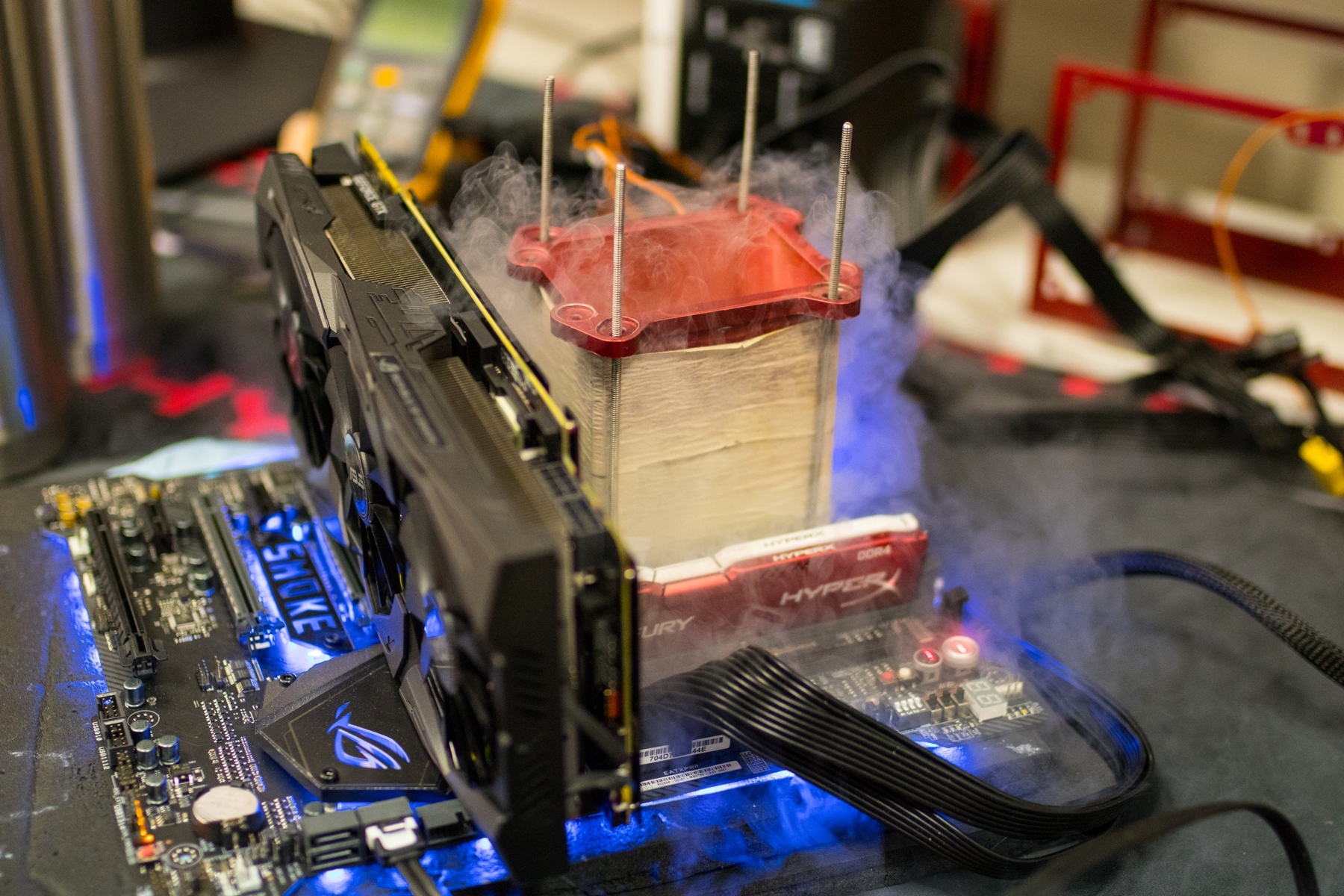
Drives: HyperX Fury and HyperX Savag e. Fast gaming SSD for SATA-III interface. They are loved by overclockers for “indestructibility”, because due to the constant loss of power (unsuccessful system settings, emergency reboots), a considerable part of the SSD simply “fell off” the controller. And even if overclockers had a backup tuned for competitions and specific operating system disciplines, no one allows them to “go home for a spare” SSD during a tournament.
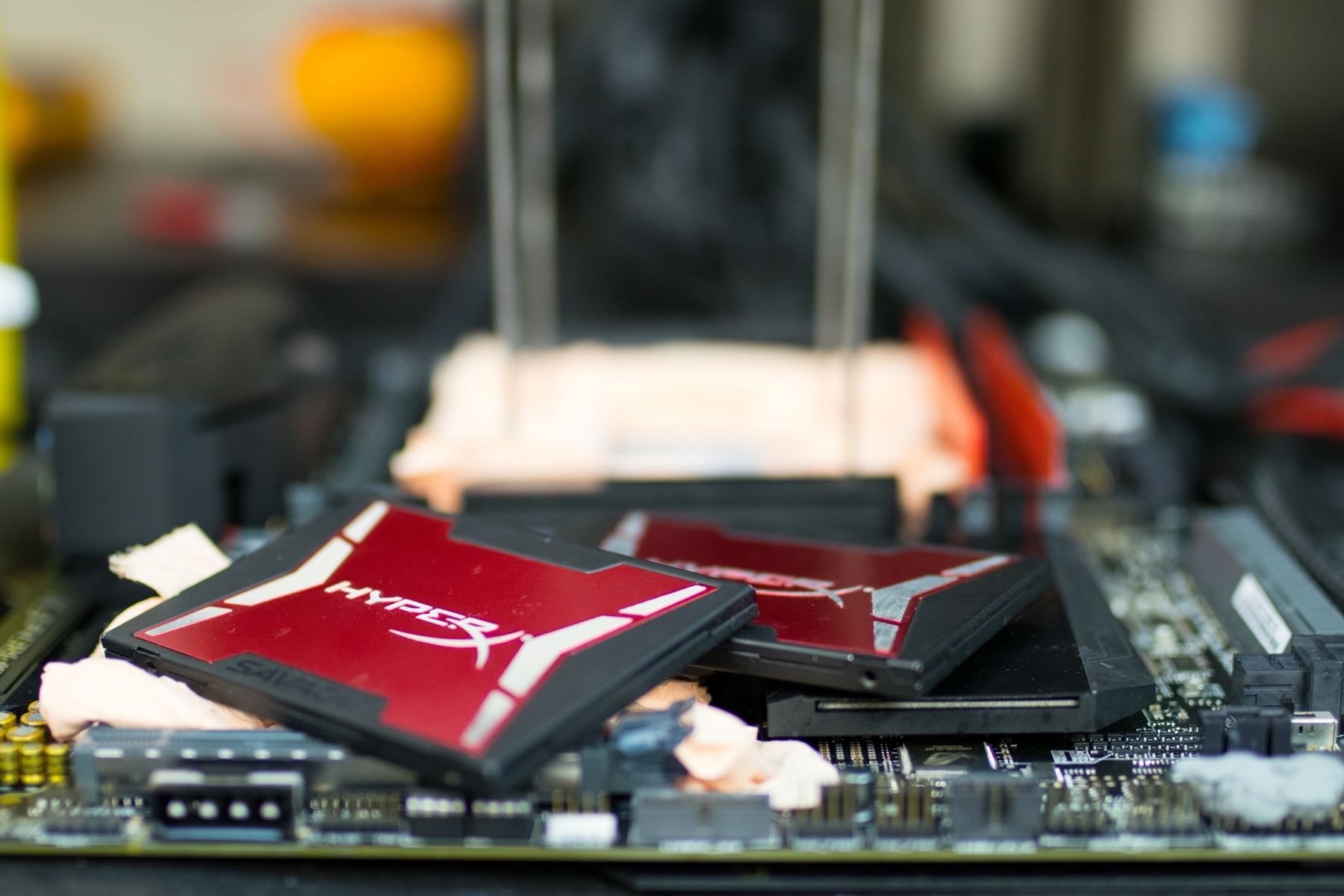
These SSDs have experienced so many power surges and emergency shutdowns that you never dreamed of.
The prestige of Russia internationally was defended by the well-known overclockers _12_ , Atheros , slamms and Smoke . From the last of them, we achieved an “official interview” at the summit and, “not to get up twice,” the pros asked about how the new NVIDIA video cards and AMD processors manifest themselves in the extreme acceleration with nitrogen.

Team Russia at ASUS OC Summit 2017
Couch experts report that I would like to see an absolute record in all tested disciplines. Why did it not work out to press the new 1080 Ti?
Because 2370 MHz for the GPU is not yet the “ceiling” for the GeForce GTX 1080 Ti on a worldwide scale, but the upper limit for the best of the video cards that we managed to get for the summit.
And we had ten such video cards. The potential of each of them, we first checked on air cooling, then - test run under liquid nitrogen, and a little later - the work is not the limit. By itself, the GTX 1080 Ti is, I must say, excellent - both in terms of price / performance ratio, and how it behaves in work on the “full glass” (-196 degrees, the maximum temperature that nitrogen can transfer to copper). But in overclocking, there is always the “selection” factor, and if Kingpin, for example, got a sample that worked stably at 2500 MHz, you can't argue with this result.
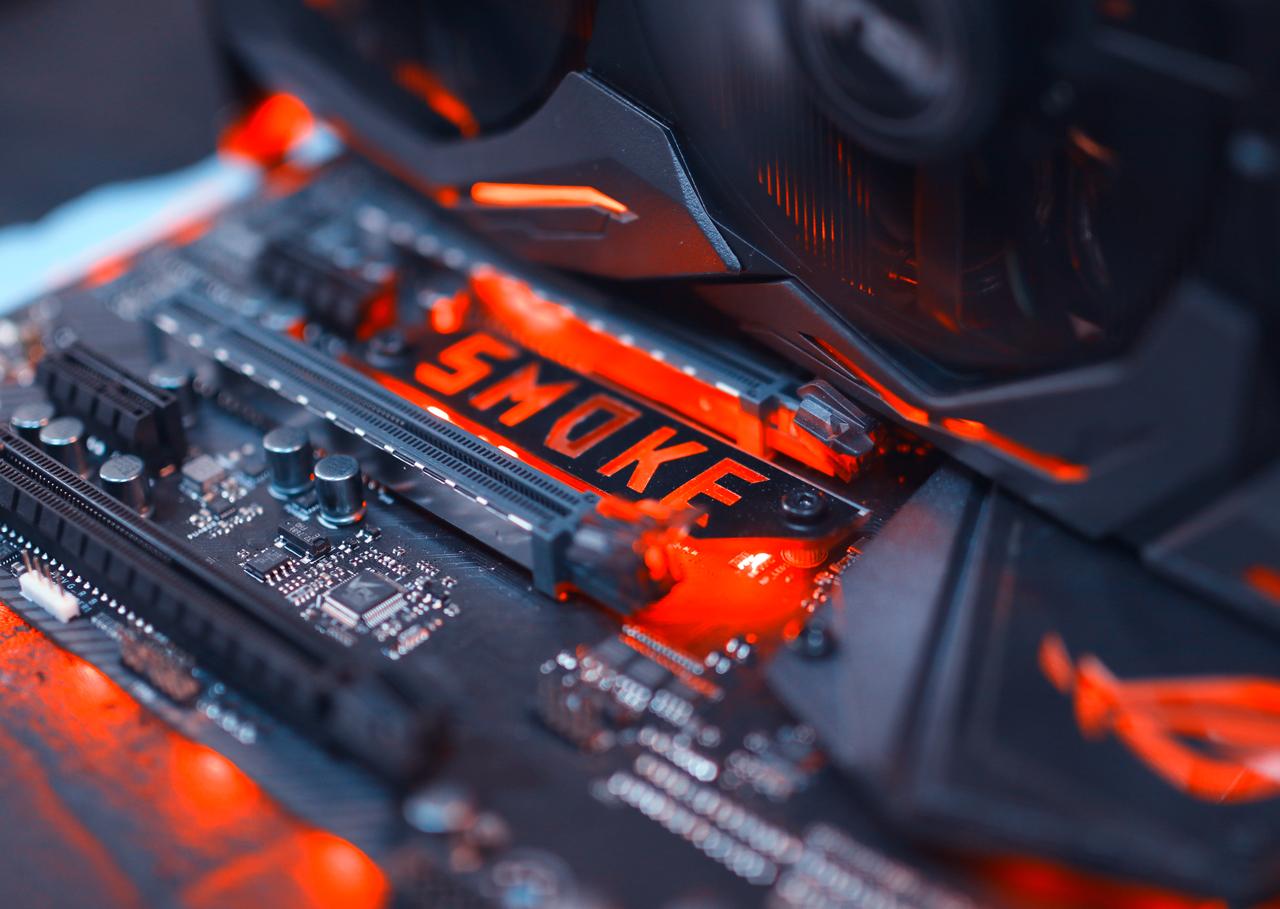
Titan Xp, by the way, is also a powerful argument, even though it is not very popular among overclockers due to its high cost and does not excite the imagination with overclocking. By the way, the amount of video memory, which manufacturers boast so much, is not so important in extreme overclocking - even the wildly voracious Fire Strike Ultra, a benchmark for 4K, fits into 8 GB VRAM. The remaining disciplines consume even less memory. But this is a “synthetics”, the task of which is to maximally load the resources of any iron that it will be served!
By the way, I remember about the Titans, you said that Titan X is not only not “pernicious” and expensive in itself, it also requires a large number of alterations for overclocking. Has Titan Xp changed anything for the better?
The most unchanged in Titan is that it is still prohibitively expensive :) And in some cases it accelerates even worse than the old Titan X - for example, the “German” overclocked this video card and was unpleasantly surprised that the overclocking of the GPU was 2260 MHz, while The old Titan X took the line to 2300 MHz. Of course, taking into account changes in the architecture, technical process and characteristics of the chips, it still turned out faster than it was, and with the difference in ROP (blocks of raster operations) between 1080 Ti and the new Titan, nothing can be done. But we still have the impression that Titan is a crazy infusion of money into a video card, which then “takes off” with difficulty, so we will probably continue to work on overclocking less expensive video cards.
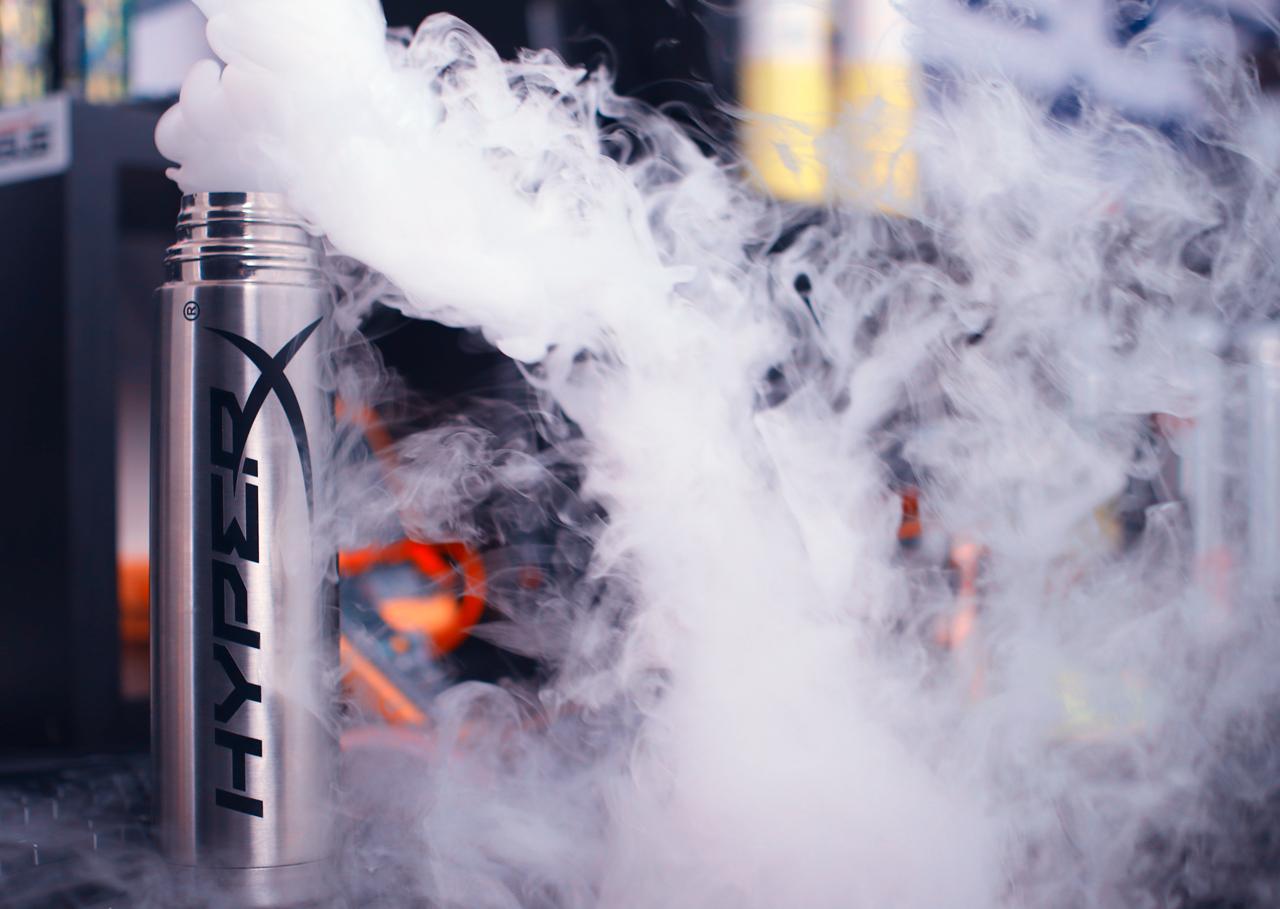
Why do professional overclockers run around with the Core i7-7700K when there is a “live” Broadwell-E about ten cores?
Because the 7700K behaves better in benchmarks with an emphasis on the clock frequency (legacy benchmarks, see above), and in terms of versatility it remains ahead. That is, an overclocker with a limited budget, for whom it is important to be as high as possible in the HWBot rating, would rather choose 7700K and invest in the graphics than choose a less balanced platform for overclocking, but will fork over Broadwell-E.
And for the “home overclocking”, the 7700K is preferable, because fewer cores, lower TDP, more air cooling options. But in the championships the processor is very troublesome in operation - in it, unlike the 6950X, very thin textolite is used, which constantly bends. Almost installed, pinned up - and “hello”, the channels become inoperative.

In addition, 7700K must necessarily be scalped, that is, get rid of the sealant. The damping gap between the lid and the crystal disappears, which means that the “stabbed” ones that are not working after accidentally pressing the Kaby Lake crystal in professional overclocking become very much.
The 6950X is good because it has grown “wide”, and because it doesn’t need to be “properly cooked” - special paranoids may prefer to additionally polish the lid, but there is no special need for that.
Benchmarks traditionally well parallel (for that they are benchmarks), so 10 cores are vital in the same, for example, 3DMark 11, where in the test of physics without 29 thousand "parrots" obtained by the processor, the record can not be seen. Similarly, kernels and threads are important in 3DMark Vantage, Fire Strike, and TimeSpy. But in terms of points, including disciplines XTU, SuperPi, PiFast, 1M, HWBot Prime, Prime24, preferably the high-frequency 7700K. So the "universal weapon" does not exist.
Why are there so few (to put it mildly) “red” in professional overclocking? AMD completely "can not graphics"?
AMD can, and in terms of the coherence of video cards in CrossFire, the “red” is preferable (for NVIDIA, with its SLI, for some reason, progress is reversed, with each new generation the video card gets worse and worse). Just productive configurations today require video cards of at least GTX 1080, and as soon as AMD video cards of this level appear, they will be able to make noise in Unigine Heaven and Fire Strike, taking into account the peculiarities of the architecture. As for the rest of the disciplines, I would not be so sure.
But how did it happen that AMD RyZEN did not “undermine the foundations” of overclocking and did not make a revolution, so to speak?
Ryzen? And what about RyZEN? For overclocking, he is of little interest. I don’t remember what frequency it conquers in the “air”, but under liquid nitrogen RyZEN 7 conquers from 4.8 to 5.4 GHz. These are not 8+ GHz (albeit “corn”), which turned the overclocking and validation of the results of the same Vishera into a loud event. This is the frequency level of Core i7 Nehalem nine years ago.
Yes, the performance of "Risen" is very good - he, roughly speaking, can compete in efficiency to the beat already with the Intel Core i7-5960X (Haswell-E). With the difference that the 5960X without any problems took the bar at 6 GHz, which the RyZEN 7 does not submit. Again, the memory controller in RyZEN is also inferior in efficiency to Intel.
Now, if, say, a 20-core processor, which can hold the same 4.8-5.4 GHz in overclocking, is released, the list of "championship" iron in the standings will be transformed beyond recognition. In the meantime, the stakes are too high, so RyZEN is still curious except Cinebench and HWBot Prime, but it doesn’t "do it".
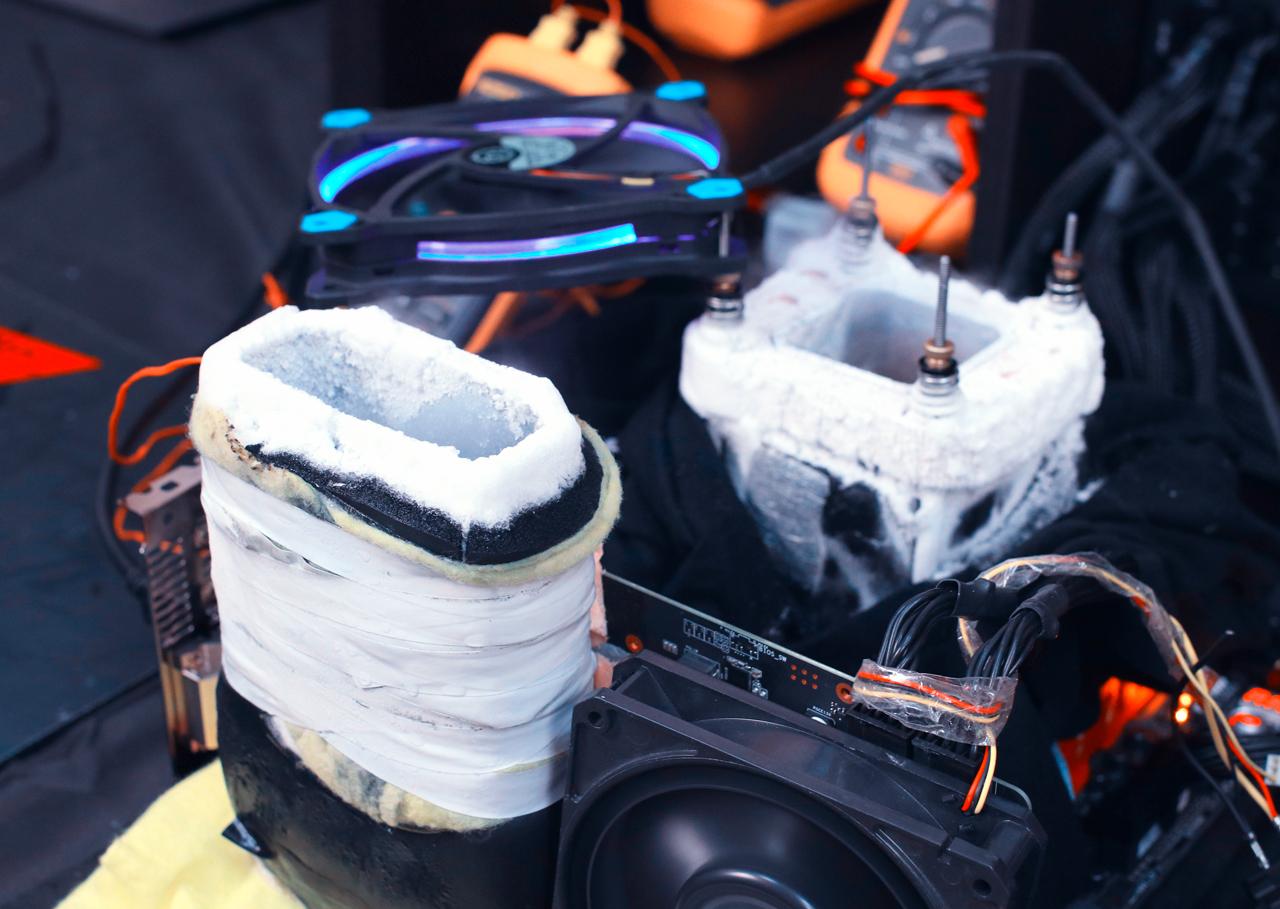
But after all, in RyZEN home computers, they say, “wow!”, “Wow,” a loud event?
For me, oddly enough, Core i3-7350K is much more interesting. Yes, a dual-core four-threaded processor with an unlocked multiplier. Over 10 thousand rubles - a great set! Flagship processors at the flagship price is cool, but a huge number of competitive online games (the same Counter-Strike: Global Offensive, for example) work great on Core i3.
Another thing is that new blockbusters, like Battlefield 1, with pleasure "eat" a much larger number of cores and threads. But in this case, I would prefer the Core i7-7700K, which has already been studied along and across and is more efficient at overclocking even at home.
When will Team Russia issue a new batch of overclocking records?
As for the overclocking summits, they take place once a quarter, but, in addition, we will “light up” on “Igromir”, and on several other events, which I will keep secret for now.
Frankly, the HWBot leagues in many cases turned into a “purse contest”, so we departed from the tactics of manic rivalry and permanent sitting in the TOP-3. This is a real task, and we have already proved that this is possible, but the time to waste money has passed. Now we are doing what we like in overclocking - we overclock iron to unlock its potential, and we participate in events so that as many gamers and PC lovers as possible can see with our own eyes what results and how we can achieve from modern iron.
HyperX is also ready to introduce everyone to the overclocking and high-speed hardware, so we give a 10% discount on HyperX Fury DDR4 modules (they now exist not only in black, but also in red and white - they will be called in the case of any color). The discount is valid in Yulmart from April 28, 2017 to May 15, 2017 under the promotional code HXCOLOUR . A good reason to overclock the memory in your home PC like a pro!
Subscribe and stay with us - it will be interesting! For more information about Kingston and HyperX products, visit the company's official website . In choosing your kit HyperX help page with visual aids .

“Records on schedule” is not a very romantic practice. Overclocking masters must approach the business creatively and take heart records in benchmarks with an outburst of heart, right? But jokes and jokes, and to help talented guys with new components is necessary - for this, there is a joint overclocking summit of ASUS and HyperX , which takes place once a quarter.

This set + skill is enough for world records
')
Fast iron + skill = world records
This time, the main reason for “overclocking” was the debut of the NVIDIA GeForce 1080 Ti video card, an intermediate model between the astronomically expensive Titan Xp and the “ex-flagship”, the standard version of the GTX 1080.

NVIDIA GeForce GTX 1080 Ti - the most productive video card at a reasonable price
The result is an absolute record in 3DMark03 (353103 points) and five more prizes in the TOP-5 in the following disciplines:

• 3DMark TimeSpy - 13044 marks - GeForceGTX 1080 Ti @ 2354 / 1560MHz - 2nd place among single video cards;
• Unigine Heaven Xtreme - 11187.37 DX11 Marks - 2x GeForce GTX 1080 Ti @ 2000 / 1377MHz - 3rd global location;
• 3DMark11 Performance - 40994 marks - GeForce GTX 1080 Ti @ 2328 / 1552MHz - 4th global location;
• 3DMark Vantage Performance - 101539 marks - GeForce GTX 1080 Ti @ 2350 / 1575MHz - 4th global place;
• 3DMark Fire Strike Extreme - 17642 marks - GeForce GTX 1080 Ti @ 2370 / 1560MHz - 4th place among single video cards.
The victorious configuration consisted of the following components:
The best iron doesn't mean the most expensive
“Yes, I will call you this configuration with my eyes closed! They piled up expensive iron - and all things! ”- it seems at first glance. But overclocking is different from the shopping of the oligarchs, it’s not enough just to take the most expensive components to find yourself among the world record holders. Now you will understand why:
Processors: Intel Core i7 7700K (Intel Kaby Lake) and Intel Core i7 6950X (Broadwell-E). As you can see, the LGA1151 is not such a “consumer goods for housewives” as it may seem in comparison with 2011-v3.

Fell the death of the brave
Moreover, although the differences between the Skylake and Kaby Lake microarchitectures are insignificant, the optimization of the processors was enough for the top part of the table with the fastest processors to be crammed with the seventh generation of Intel Core. In all cases where the so-called legacy benchmarks (3DMark from first to sixth, Aquamark) are used, the high frequency and performance per clock in the Kaby Lake Core i7 come in handy.
But Broadwell-E, whatever one may say, is necessary for modern tests with an emphasis on the graphic component. Because, if in popular games one can still complain that “igrodels do not know how to load more than four cores”, then synthetic benchmarks are designed with a much broader base on multi-threading and multi-core. So, there is a benefit from the redundant Core i7 Extreme home PC in sports overclocking.
Motherboards: ASUS ROG Maximus IX Apex on the Z270 chipset (Kaby Lake) and ASUS Rampage V Edition 10 (platform 2011-v3). We have already told about Apex - it is a “sports” matplata that is resistant to low temperatures, in which there is nothing superfluous, even the third RAM slot. The memory controller in Intel Kaby Lake processors is dual-channel, which means that maximum efficiency is achieved when the motherboard has two RAM modules. All that is above is an unjustified load on the controller under conditions when each “parrot” of the benchmark is counted.
Rampage V Edition 10 is about the same "combat minimum", but for Broadwell-E and based on the Intel X99 chipset. With convenient start control and stable operation when cooled with nitrogen. A huge number of overclocking settings that may not be useful in home use, but help to quickly find the right mode in overclocking.
Memory: HyperX Fury and Predator , DDR4, of course. Modules with a capacity of 8 GB, two for a platform based on Kaby Lake (for dual-channel controller) and four for 2011-v3. You can marvel at the fact that not an ultra-extreme Fury sets world records, but for many benchmarks it’s not enough the highest memory frequency, which only happens, but just a good overclocking, beyond which the result will remain unchanged. There are many particulars for each of the disciplines, especially in the "vintage" benchmarks.

RAM, in contrast to the cooling of the processor or video card, does not need to “tune” in any way for high results.
The differences between Fury and Predator are not revolutionary (no one “reinvented” the DDR4 module even for the flagship series), but they consist mainly in the overclocking potential of the memory chips. Fury can also be well dispersed, but Predator makes it more efficient and easier.
Video card: ASUS ROG Strix GeForce GTX 1080 Ti Gaming

Drives: HyperX Fury and HyperX Savag e. Fast gaming SSD for SATA-III interface. They are loved by overclockers for “indestructibility”, because due to the constant loss of power (unsuccessful system settings, emergency reboots), a considerable part of the SSD simply “fell off” the controller. And even if overclockers had a backup tuned for competitions and specific operating system disciplines, no one allows them to “go home for a spare” SSD during a tournament.

These SSDs have experienced so many power surges and emergency shutdowns that you never dreamed of.
The prestige of Russia internationally was defended by the well-known overclockers _12_ , Atheros , slamms and Smoke . From the last of them, we achieved an “official interview” at the summit and, “not to get up twice,” the pros asked about how the new NVIDIA video cards and AMD processors manifest themselves in the extreme acceleration with nitrogen.

Team Russia at ASUS OC Summit 2017
Titan Xp or 1080 Ti? Kaby Lake or Broadwell-E?
Couch experts report that I would like to see an absolute record in all tested disciplines. Why did it not work out to press the new 1080 Ti?
Because 2370 MHz for the GPU is not yet the “ceiling” for the GeForce GTX 1080 Ti on a worldwide scale, but the upper limit for the best of the video cards that we managed to get for the summit.
And we had ten such video cards. The potential of each of them, we first checked on air cooling, then - test run under liquid nitrogen, and a little later - the work is not the limit. By itself, the GTX 1080 Ti is, I must say, excellent - both in terms of price / performance ratio, and how it behaves in work on the “full glass” (-196 degrees, the maximum temperature that nitrogen can transfer to copper). But in overclocking, there is always the “selection” factor, and if Kingpin, for example, got a sample that worked stably at 2500 MHz, you can't argue with this result.

Titan Xp, by the way, is also a powerful argument, even though it is not very popular among overclockers due to its high cost and does not excite the imagination with overclocking. By the way, the amount of video memory, which manufacturers boast so much, is not so important in extreme overclocking - even the wildly voracious Fire Strike Ultra, a benchmark for 4K, fits into 8 GB VRAM. The remaining disciplines consume even less memory. But this is a “synthetics”, the task of which is to maximally load the resources of any iron that it will be served!
By the way, I remember about the Titans, you said that Titan X is not only not “pernicious” and expensive in itself, it also requires a large number of alterations for overclocking. Has Titan Xp changed anything for the better?
The most unchanged in Titan is that it is still prohibitively expensive :) And in some cases it accelerates even worse than the old Titan X - for example, the “German” overclocked this video card and was unpleasantly surprised that the overclocking of the GPU was 2260 MHz, while The old Titan X took the line to 2300 MHz. Of course, taking into account changes in the architecture, technical process and characteristics of the chips, it still turned out faster than it was, and with the difference in ROP (blocks of raster operations) between 1080 Ti and the new Titan, nothing can be done. But we still have the impression that Titan is a crazy infusion of money into a video card, which then “takes off” with difficulty, so we will probably continue to work on overclocking less expensive video cards.

Why do professional overclockers run around with the Core i7-7700K when there is a “live” Broadwell-E about ten cores?
Because the 7700K behaves better in benchmarks with an emphasis on the clock frequency (legacy benchmarks, see above), and in terms of versatility it remains ahead. That is, an overclocker with a limited budget, for whom it is important to be as high as possible in the HWBot rating, would rather choose 7700K and invest in the graphics than choose a less balanced platform for overclocking, but will fork over Broadwell-E.
And for the “home overclocking”, the 7700K is preferable, because fewer cores, lower TDP, more air cooling options. But in the championships the processor is very troublesome in operation - in it, unlike the 6950X, very thin textolite is used, which constantly bends. Almost installed, pinned up - and “hello”, the channels become inoperative.

In addition, 7700K must necessarily be scalped, that is, get rid of the sealant. The damping gap between the lid and the crystal disappears, which means that the “stabbed” ones that are not working after accidentally pressing the Kaby Lake crystal in professional overclocking become very much.
The 6950X is good because it has grown “wide”, and because it doesn’t need to be “properly cooked” - special paranoids may prefer to additionally polish the lid, but there is no special need for that.
Benchmarks traditionally well parallel (for that they are benchmarks), so 10 cores are vital in the same, for example, 3DMark 11, where in the test of physics without 29 thousand "parrots" obtained by the processor, the record can not be seen. Similarly, kernels and threads are important in 3DMark Vantage, Fire Strike, and TimeSpy. But in terms of points, including disciplines XTU, SuperPi, PiFast, 1M, HWBot Prime, Prime24, preferably the high-frequency 7700K. So the "universal weapon" does not exist.
For AMD hurt
Why are there so few (to put it mildly) “red” in professional overclocking? AMD completely "can not graphics"?
AMD can, and in terms of the coherence of video cards in CrossFire, the “red” is preferable (for NVIDIA, with its SLI, for some reason, progress is reversed, with each new generation the video card gets worse and worse). Just productive configurations today require video cards of at least GTX 1080, and as soon as AMD video cards of this level appear, they will be able to make noise in Unigine Heaven and Fire Strike, taking into account the peculiarities of the architecture. As for the rest of the disciplines, I would not be so sure.
But how did it happen that AMD RyZEN did not “undermine the foundations” of overclocking and did not make a revolution, so to speak?
Ryzen? And what about RyZEN? For overclocking, he is of little interest. I don’t remember what frequency it conquers in the “air”, but under liquid nitrogen RyZEN 7 conquers from 4.8 to 5.4 GHz. These are not 8+ GHz (albeit “corn”), which turned the overclocking and validation of the results of the same Vishera into a loud event. This is the frequency level of Core i7 Nehalem nine years ago.
Yes, the performance of "Risen" is very good - he, roughly speaking, can compete in efficiency to the beat already with the Intel Core i7-5960X (Haswell-E). With the difference that the 5960X without any problems took the bar at 6 GHz, which the RyZEN 7 does not submit. Again, the memory controller in RyZEN is also inferior in efficiency to Intel.
Now, if, say, a 20-core processor, which can hold the same 4.8-5.4 GHz in overclocking, is released, the list of "championship" iron in the standings will be transformed beyond recognition. In the meantime, the stakes are too high, so RyZEN is still curious except Cinebench and HWBot Prime, but it doesn’t "do it".

But after all, in RyZEN home computers, they say, “wow!”, “Wow,” a loud event?
For me, oddly enough, Core i3-7350K is much more interesting. Yes, a dual-core four-threaded processor with an unlocked multiplier. Over 10 thousand rubles - a great set! Flagship processors at the flagship price is cool, but a huge number of competitive online games (the same Counter-Strike: Global Offensive, for example) work great on Core i3.
Another thing is that new blockbusters, like Battlefield 1, with pleasure "eat" a much larger number of cores and threads. But in this case, I would prefer the Core i7-7700K, which has already been studied along and across and is more efficient at overclocking even at home.
New records
When will Team Russia issue a new batch of overclocking records?
As for the overclocking summits, they take place once a quarter, but, in addition, we will “light up” on “Igromir”, and on several other events, which I will keep secret for now.
Frankly, the HWBot leagues in many cases turned into a “purse contest”, so we departed from the tactics of manic rivalry and permanent sitting in the TOP-3. This is a real task, and we have already proved that this is possible, but the time to waste money has passed. Now we are doing what we like in overclocking - we overclock iron to unlock its potential, and we participate in events so that as many gamers and PC lovers as possible can see with our own eyes what results and how we can achieve from modern iron.
HyperX is also ready to introduce everyone to the overclocking and high-speed hardware, so we give a 10% discount on HyperX Fury DDR4 modules (they now exist not only in black, but also in red and white - they will be called in the case of any color). The discount is valid in Yulmart from April 28, 2017 to May 15, 2017 under the promotional code HXCOLOUR . A good reason to overclock the memory in your home PC like a pro!
Subscribe and stay with us - it will be interesting! For more information about Kingston and HyperX products, visit the company's official website . In choosing your kit HyperX help page with visual aids .
Source: https://habr.com/ru/post/403619/
All Articles